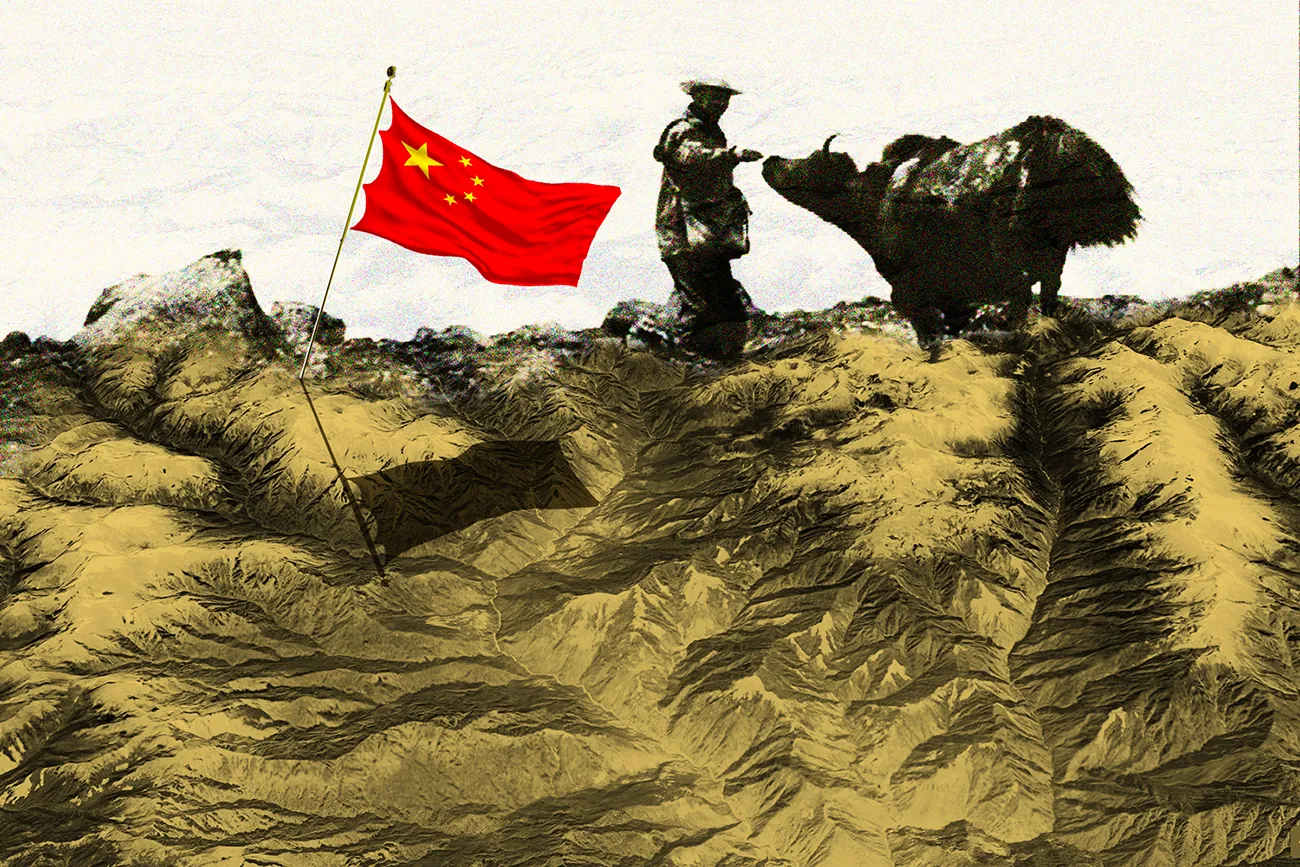As the U.S. government has spent ever more of its time in recent years preparing to respond to any potential Chinese invasion of Taiwan, Beijing has been busy slicing away parts of the tiny Himalayan kingdom of Bhutan. Over the last few years, China has built massive infrastructure with hundreds of concrete structures, military posts, and administrative centers in the region of Beyul Khenpajong, some 12,000 feet in the northern Himalayan mountains. The so-called “hidden valley” is deemed sacred by Bhutanese, with the country’s royal family tracing its ancestral heritage to the area.
China’s blatant land grab of Bhutanese territory is just its latest move to control areas of significance in Buddhist culture, exploit a far less resourceful neighbor, and challenge its regional rival India in the Himalayas.
China’s expansion in the Beyul was first reported in Foreign Policy in 2021 by Robert Barnett, an expert on Tibet and the China-Bhutan border. Barnett wrote that while China had announced the settlement of a single village called Gyalaphug in the contested valley back in 2015, tens of miles of road and several key military buildings were in place in the Beyul and the neighboring Menchuma Valley by 2021.
He spoke to Foreign Policy from Paris last week and said that over the last two years, construction in the valley “more than doubled.”
In his 2021 report, Barnett and his team of researchers spotted 66 miles of new roads, a small hydropower plant, a communications base, five military or police outposts, and a major signals tower, among other edifices, in the Beyul and the Menchuma Valley.
According to a report on an Indian news channel, those scattered buildings now lie in fully established strips of townships with hundreds of multistory structures. The cars parked outside the buildings give the impression that the areas are inhabited, even though in 1998 China agreed with Bhutan to stick to the status quo until a final border settlement could be reached.
Bhutan, however, is a nation of just 800,000 inhabitants and a humble $3 billion economy. It has neither the economic nor the military means to respond to Chinese encroachments.
A Chatham House report published last month said that despite the cultural significance of the region, the Bhutanese government has been “powerless to stop Chinese settlement.” Experts worry that Bhutan may have to cede territory to avoid a confrontation between nuclear-armed India and China.
“The new outposts in Bhutan’s remote Jakarlung Valley, part of the Beyul Khenpajong region, may become permanent Chinese territory after an announcement on a border deal between the two countries expected soon,” John Pollock and Damien Symon warned in the Chatham report.
The 25th and latest round of talks between Thimphu and Beijing were held in October, four decades after negotiations to resolve the border dispute started. China claims 495 square kilometers (191 square miles) of territory in north-central Bhutan in the Jakarlung and Pasumlung valleys (Jakarlung is part of the Beyul) and 269 square kilometers (104 square miles) in the Doklam plateau in the west on Bhutan’s border with India. In 2020, China added Sakteng in the east to its list reportedly to seek advantage in negotiations.
The fact that China’s claims in Bhutan are based on the assertion that these regions are a part of the Tibet Autonomous Region (TAR) has left the Tibetans flabbergasted. They are offended that China is pushing forward its imperialist agenda in their name.

